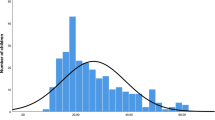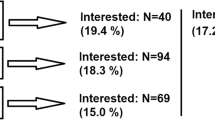Abstract
Since toys are potential sources of lead contamination for young children, we aim to explore potential correlations between blood-lead-levels (BLLs) of young children and toy-lead contamination using two concurrent investigations. In investigation-1, a total of 2249 children under 7 years old were studied using stratified-cluster-sampling in 6 districts of Shanghai, parents completed questionnaires and children’s whole-blood was collected, and then BLLs were measured using tungsten-atomizer-absorption-spectrophotometer. In investigation-2, a total of 288 toys made of different materials (plastic, wooden, metals, and stuffed cloth) were collected in 6 great supermarkets/toy-stores and toy-lead-levels were measured by a portable X-ray-fluorescence instrument. The geometric-mean of BLLs was 2.02 μg/dL. Adjusting for related confounders, playing with plastic toys was a significant risk factor (β = 0.067, P < 0.05) for BLL-increment. Plastic toys accounted for the highest proportion (154/288, 53.47%) and had the highest rates exceeding toy-lead-standards (the over-standard rates of ≥ 300/600 mg/kg, plastic toys: 3.90%/1.30%; other toys: 0.00%/0.00%). Children’s BLLs in the three (Pudong-suburban, Xuhui, and Yangpu) districts and toy-lead over-standard rates in the neighboring stores were compared, the highest BLLs and over-standard rates were both found in Pudong-suburban district and similar BLLs and over-standard rates were observed between Yangpu and Xuhui districts (Pudong-suburban vs. Xuhui vs. Yangpu: 2.07 vs. 1.55 vs. 1.50 μg/dL for the medians of BLLs, P < 0.001; 1.67% vs. 0.00% vs. 0.00% for the over-standard rates of ≥ 600 mg/kg). This study raised the possibility that lead contamination in toys (especially in low social-economic-status areas) might be associated with BLLs in young children. Lead contamination from plastic toys needs cautions for preventing children from lead exposure.



Similar content being viewed by others
Data Availability
The datasets used in this study are available from the corresponding author on reasonable request.
References
Bellinger DC (2008) Very low lead exposures and children’s neurodevelopment. Curr Opin Pediatr 20:172–177. https://doi.org/10.1097/MOP.0b013e3282f4f97b
Burm E, Song I, Ha M, Kim YM, Lee KJ, Kim HC, Lim S, Kim SY, Lee CG, Kim SY et al (2016) Representative levels of blood lead, mercury, and urinary cadmium in youth: Korean Environmental Health Survey in Children and Adolescents (KorEHS-C), 2012–2014. Int J Hyg Environ Health 219:412–418. https://doi.org/10.1016/j.ijheh.2016.04.004
Cai QL, Peng DJ, Lin Z, Chen JW, Yong L, Luo HL, Ou SY, Huang ML, Jiang YM (2021) Impact of Lead Exposure on Thyroid Status and IQ Performance among School-age Children Living Nearby a Lead-Zinc Mine in China. Neurotoxicology 82:177–185. https://doi.org/10.1016/j.neuro.2020.10.010
Centers for Disease, C., and Prevention (2006) Death of a child after ingestion of a metallic charm--Minnesota, 2006. MMWR Morb Mortal Wkly Rep 55:340-341
CNNIC (2014) Reports of Chinese online trading in 2013
CNNIC (2015) Reports of Chinese online trading in 2014
Firestone M, Moya J, Cohen-Hubal E, Zartarian V, Xue J (2007) Identifying childhood age groups for exposure assessments and monitoring. Risk Anal 27:701–714. https://doi.org/10.1111/j.1539-6924.2007.00918.x
Greenway JA, Gerstenberger S (2010) An evaluation of lead contamination in plastic toys collected from day care centers in the Las Vegas Valley, Nevada, USA. Bull Environ Contam Toxicol 85:363–366. https://doi.org/10.1007/s00128-010-0100-3
Gulson B, Korsch M, Matisons M, Douglas C, Gillam L, McLaughlin V (2009) Windblown lead carbonate as the main source of lead in blood of children from a seaside community: an example of local birds as “canaries in the mine.” Environ Health Perspect 117:148–154. https://doi.org/10.1289/ehp.11577
Guney M, Zagury GJ (2013) Contamination by ten harmful elements in toys and children’s jewelry bought on the North American market. Environ Sci Technol 47:5921–5930. https://doi.org/10.1021/es304969n
Hillyer MM, Finch LE, Cerel AS, Dattelbaum JD, Leopold MC (2014) Multi-technique quantitative analysis and socioeconomic considerations of lead, cadmium, and arsenic in children’s toys and toy jewelry. Chemosphere 108:205–213. https://doi.org/10.1016/j.chemosphere.2014.01.041
Hon KL, Fung CK, Leung AK (2017) Childhood lead poisoning: an overview. Hong Kong Med J 23:616–621. https://doi.org/10.12809/hkmj176214
Horton LM, Mortensen ME, Iossifova Y, Wald MM, Burgess P (2013) What do we know of childhood exposures to metals (arsenic, cadmium, lead, and mercury) in emerging market countries? Int J Pediatr 2013:872596. https://doi.org/10.1155/2013/872596
Ji A, Wang F, Luo W, Yang R, Chen J, Cai T (2011) Lead poisoning in China: a nightmare from industrialisation. Lancet 377:1474–1476. https://doi.org/10.1016/S0140-6736(10)60623-X
Lanphear BP, Hornung R, Khoury J, Yolton K, Baghurst P, Bellinger DC, Canfield RL, Dietrich KN, Bornschein R, Greene T et al (2005) Low-level environmental lead exposure and children’s intellectual function: an international pooled analysis. Environ Health Perspect 113:894–899. https://doi.org/10.1289/ehp.7688
Njati SY, Maguta MM (2019) Lead-based paints and children’s PVC toys are potential sources of domestic lead poisoning—a review. Environ Pollut 249:1091–1105. https://doi.org/10.1016/j.envpol.2019.03.062
Olympio KPK, Silva J, Silva ASD, Souza VCO, Buzalaf MAR, Barbosa F Jr, Cardoso MRA (2018) Blood lead and cadmium levels in preschool children and associated risk factors in Sao Paulo, Brazil. Environ Pollut 240:831–838. https://doi.org/10.1016/j.envpol.2018.04.124
Rashid A, Bhat RA, Qadri H, Mehmood MA, Shafiq Ur R (2019) Environmental and socioeconomic factors induced blood lead in children: an investigation from Kashmir. India Environ Monit Assess 191:76. https://doi.org/10.1007/s10661-019-7220-y
Sanders M, Stolz J, Chacon-Baker A (2013) Testing for lead in toys at day care centers. Work 44(Suppl 1):S29-38. https://doi.org/10.3233/wor-121492
Shen Z, Hou D, Zhang P, Wang Y, Zhang Y, Shi P, O’Connor D (2018) Lead-based paint in children’s toys sold on China’s major online shopping platforms. Environ Pollut 241:311–318. https://doi.org/10.1016/j.envpol.2018.05.078
Specht AJ, Weisskopf M, Nie LH (2014) Portable XRF technology to quantify Pb in bone in vivo. J Biomark 2014:398032. https://doi.org/10.1155/2014/398032
Specht AJ, Dickerson AS, Weisskopf MG (2019) Comparison of bone lead measured via portable x-ray fluorescence across and within bones. Environ Res 172:273–278. https://doi.org/10.1016/j.envres.2019.02.031
Specht AJ, Zhang X, Young A, Nguyen VT, Christiani DC, Ceballos DM, Allen JG, Weuve J, Nie LH, Weisskopf MG (2022) Validation of in vivo toenail measurements of manganese and mercury using a portable X-ray fluorescence device. J Expo Sci Environ Epidemiol 32:427–433. https://doi.org/10.1038/s41370-021-00358-w
Tulve NS, Suggs JC, McCurdy T, Cohen Hubal EA, Moya J (2002) Frequency of mouthing behavior in young children. J Expo Anal Environ Epidemiol 12:259–264. https://doi.org/10.1038/sj.jea.7500225
Ugwuja EI, Ogbu IS, Umeaku EA, Otuu FC (2014) Blood lead levels in children attending a tertiary teaching hospital in Enugu, south-eastern Nigeria. Paediatr Int Child Health 34:216–219. https://doi.org/10.1179/2046905514Y.0000000118
VanArsdale JL, Leiker RD, Kohn M, Merritt TA, Horowitz BZ (2004) Lead poisoning from a toy necklace. Pediatrics 114:1096–1099. https://doi.org/10.1542/peds.2004-0361
Wang S, Jin Y, Chen J, Lu L, Li Y, Zhao Q, Bu S, Geng X, Guan G, Qu W et al (2021) Blood lead levels of Chinese children from 1991 to 2020: Based on Monte Carlo simulation. Environ Pollut 278:116823. https://doi.org/10.1016/j.envpol.2021.116823
Wang T, Zhou YP, Sun Y, Zheng YX (2021b) Trends in Blood Lead Levels in the U.S. From 1999 to 2016. Am J Prev Med 60:e179–e187. https://doi.org/10.1016/j.amepre.2020.10.024
Weidenhamer JD, Miller J, Guinn D, Pearson J (2011) Bioavailability of cadmium in inexpensive jewelry. Environ Health Perspect 119:1029–1033. https://doi.org/10.1289/ehp.1003011
Xue J, Zartarian V, Tulve N, Moya J, Freeman N, Auyeung W, Beamer P (2010) A meta-analysis of children’s object-to-mouth frequency data for estimating non-dietary ingestion exposure. J Expo Sci Environ Epidemiol 20:536–545. https://doi.org/10.1038/jes.2009.42
Yan CH, Xu J, Shen XM (2013) Childhood lead poisoning in China: challenges and opportunities. Environ Health Perspect 121:A294. https://doi.org/10.1289/ehp.1307558
Yan Y, Yang S, Zhou Y, Song Y, Huang J, Liu Z, Wang Y, Wei S (2020) Estimating the national burden of mild intellectual disability in children exposed to dietary lead in China. Environ Int 137:105553. https://doi.org/10.1016/j.envint.2020.105553
Yazdanfar N, Vakili Saatloo N, Sadighara P (2022) Contamination of potentially toxic metals in children’s toys marketed in Iran. Environ Sci Pollut Res Int 29:68441–68446. https://doi.org/10.1007/s11356-022-20720-1
Zhang X, Specht AJ, Wells E, Weisskopf MG, Weuve J, Nie LH (2021) Evaluation of a portable XRF device for in vivo quantification of lead in bone among a US population. Sci Total Environ 753:142351. https://doi.org/10.1016/j.scitotenv.2020.142351
Funding
This work was supported by the National Natural Science Foundation of China (NSFC, 81974486, 81373016) (to Jian Xu), the Clinical Research Project of Shanghai Municipal Health Commission (202240392) (to Jian Xu), the National Natural Science Foundation of China (NSFC, 81973062) (to Chonghuai Yan), the National Basic Research Program of China (“973” Program, 2012CB525001) (to Chonghuai Yan).
Author information
Authors and Affiliations
Contributions
JP: statistical analyses, writing—original draft. ZG: data collection, statistical analyses. BY: data collection, statistical analyses. YL: investigation, data collection. AJS: investigation, data collection. Shuwen Chen: Data collection. Linda H Nie: Writing – review & editing. Lihua Huang: Data collection, statistical analyses. CY: investigation, project administration, supervision. JX: conceptualization, writing—review and editing, project administration, funding acquisition, supervision.
Corresponding authors
Ethics declarations
Conflict of interest
The authors have no relevant financial or non-financial interests to disclose.
Ethics Approval and Consent to Participate
The study was approved by the Medical Ethics Committee of Xinhua Hospital affiliated to Shanghai Jiao Tong University School of Medicine (approval no. XHEC-C-2012-007). Written informed consents were obtained from each child’s parent.
Consent to Publish
All authors declare they have given consent to publish this article.
Additional information
Publisher's Note
Springer Nature remains neutral with regard to jurisdictional claims in published maps and institutional affiliations.
Supplementary Information
Below is the link to the electronic supplementary material.
Rights and permissions
Springer Nature or its licensor (e.g. a society or other partner) holds exclusive rights to this article under a publishing agreement with the author(s) or other rightsholder(s); author self-archiving of the accepted manuscript version of this article is solely governed by the terms of such publishing agreement and applicable law.
About this article
Cite this article
Peng, J., Gao, Z., Xu, J. et al. Concurrent Assessment on Blood Lead in Young Children and Toy Lead in Shanghai. Expo Health (2023). https://doi.org/10.1007/s12403-023-00582-9
Received:
Revised:
Accepted:
Published:
DOI: https://doi.org/10.1007/s12403-023-00582-9




